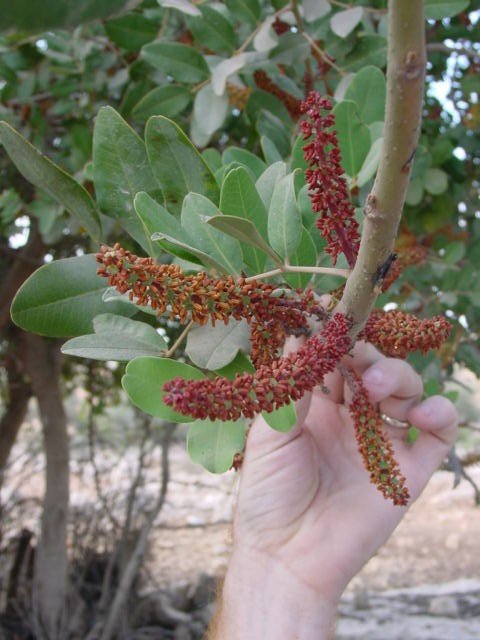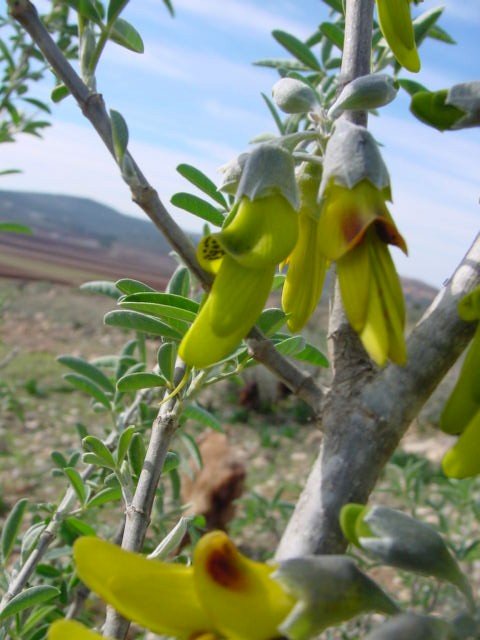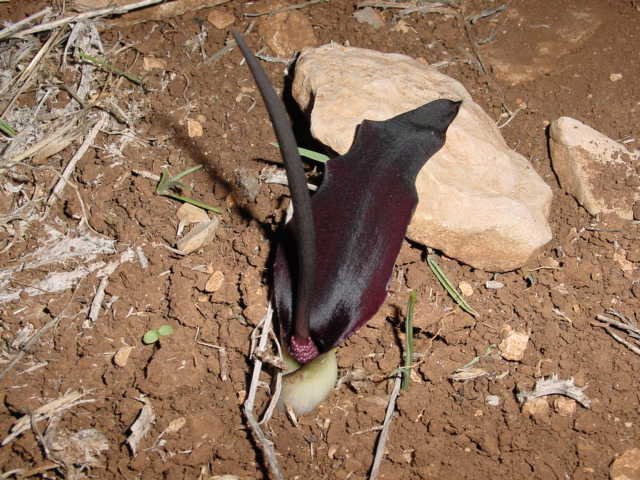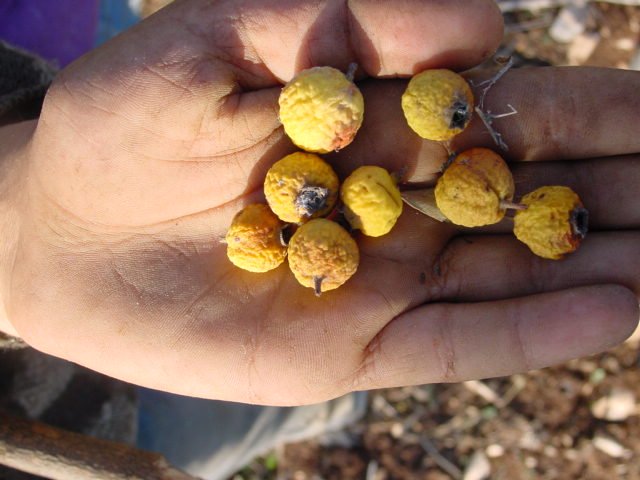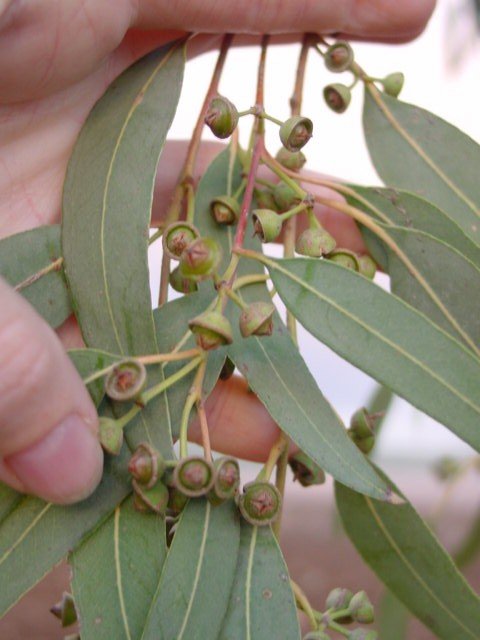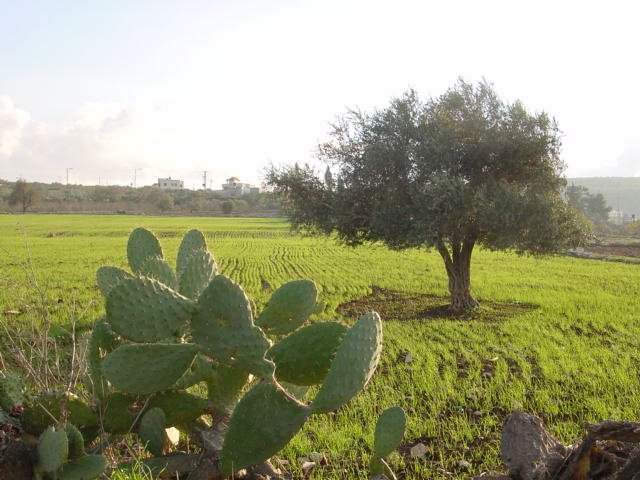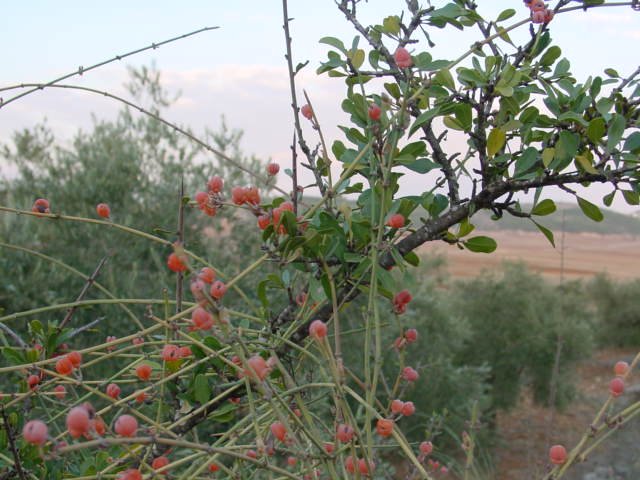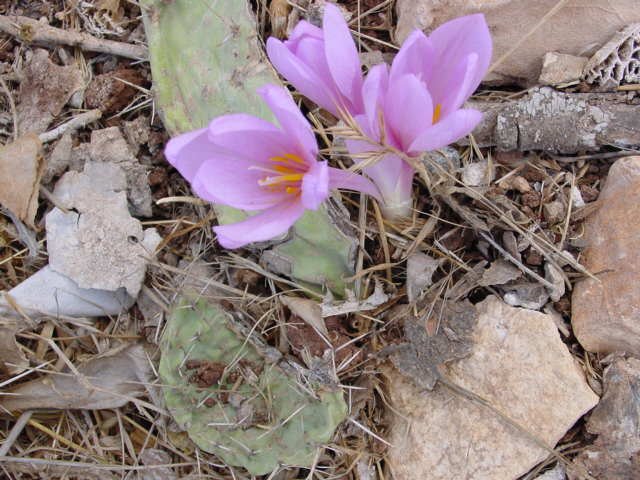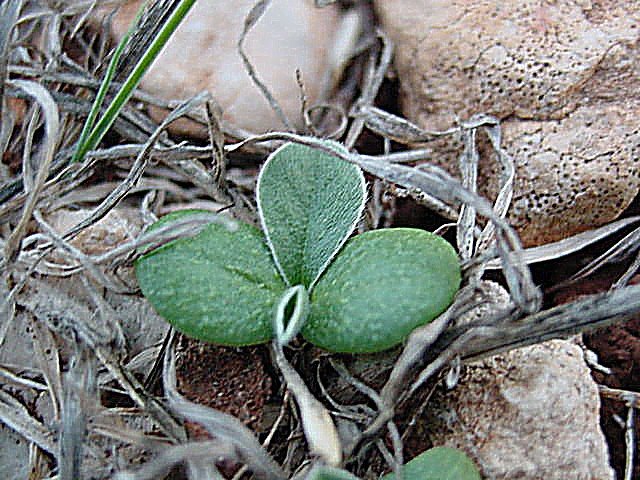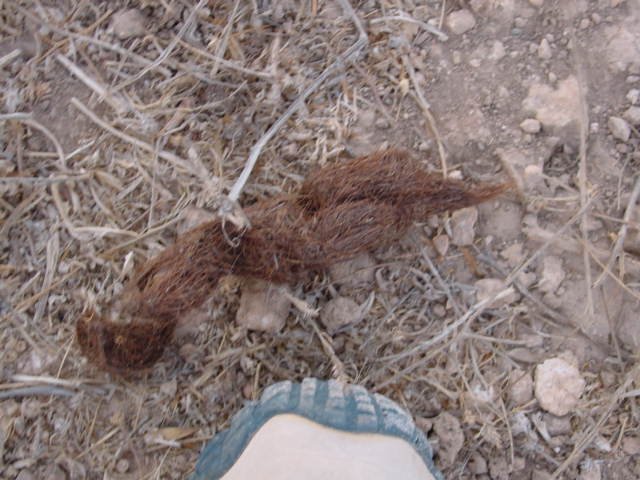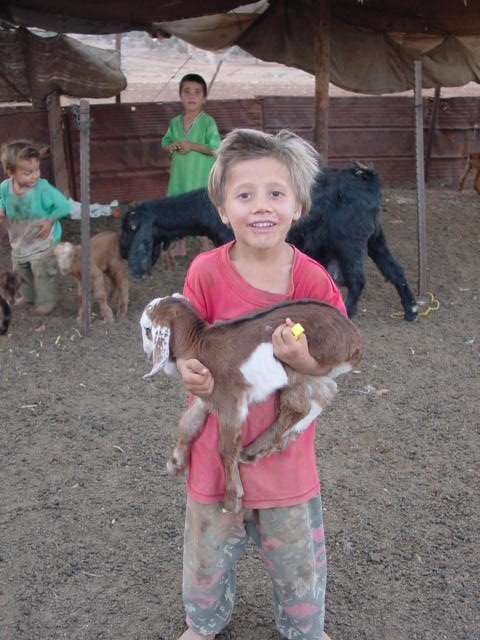Zababdeh Nature - October - December
October - December Flora
On October 1, 2001, this bush was showing signs of new life after the hot dry summer.
In mid-October the carob trees were blooming.
This, blooming in mid-October, seems to be autumn squill (Scilla autumnalis), a small plant in the lily family. It is one of the first to bloom, even before the first rains.
Curious green blossoms.
There are a lot of prickly pear cacti in and around Zababdeh. Often they are put to good use as living fences to keep goats and sheep in/out of areas. In this picture, you can see a what looks like a fruit, but it is part of the pad. While the cacti here do make bunches of bright red fruit, this fruit-in-pad development is, according to our neighbor from Gaza, really rare. As a kid, he and his friends would get very excited when they saw one--and then pick it to take home (unintentionally assuring the rarity).
On our walks in mid November, we saw a couple of these flowers, coming up after the rains. I believe this is a Galilee biarum (Biarum pyrami), but there are several flowers in the arum family here, so who knows.
Our neighbor from Gaza says that these flowerheads were once commonly used as toothpicks.
This friendly flower showed up in my potted cedar shrub. It (and its associates) greeted me each day.
When we were out in mid-November helping a family pick olives near a village called Burqin (where Jesus is said to have healed the ten lepers), some of the local boys showed me where to find these berries that taste kinda like apples.
Picking an olive.
Acorns?
On October 17, the darkened sky showed that the seasons have changed. Soon the rains will come.
In mid-October, these big bulbs are beginning to emerge.
In mid-October, these big bulbs are beginning to emerge.
Cacti in the fields.
A venerable looking olive tree. While this tree may be only around 100 years old, there are some in the Holy Land that exceed 2,000 years in age.
Reddish berries of some kind.
The purple crocuses came in October, and a month later, the white ones bloom. These may be winter crocus (Crocus hyemalis).
There are lots and lots of thorny plants here. These are all dried remains of last year's thorns. The word for thorn in Arabic is shoke, and the word for land is ard. Hence artichoke, thorn of the earth.
More thorns!
And more thorns!
Beautiful pinkish-purple flowers.
These trees are cedars, I believe.
They produce these reproductive structures.
These yellowed plants were really pretty as we picked olives near Burqin.
A close-up of these yellowed plants.
New growth after the first rains. Georgia O'Keiffe, where are you?
Greenery popping out of the ground!
New life springing forth!
Rain and growth.
Plants of all shapes and sizes emerging.
October - December Fungi
In mid-November 2001, after the rains had started, we saw this mushroom.
Same mushroom, from the underside.
October - December Fauna
In addition to these, we have seen but failed to photograph less domesticated Palestinian wildlife such as bats (seen any evening we are out for a walk), a jackrabbit (a friendly look-alike with the ones in Lubbock), and lots of birds (they don't sit still enough to have their portraits taken).
Hairy scat. October 1, 2001.
This friendly turtle was wandering around some shrubs around the fields near our home. I saw another (Box?) turtle up in the hills near the Arab American University. This one reminded me of my long-gone pet, Franco.
Bugs!
This friendly praying mantis skittered across our path one day during a walk in the hills.
In September 2000, we saw several of these critters. This one was hanging out (hopefully eating mosquitoes) in our drapes. Our American friends call them geckos. Isn't it cute?!
I found this live snail semi-embedded in a dirt road. Perhaps it was only semi-alive, too.
And again, in October 2001, we saw more.
In July of 2001, when we were staying in Bir Zeit, I met another lizard, among rocks and scrub along the road. I hope it wasn't too distressed by being picked up and photographed.
On our way home from gazing at cute baby sheep, we saw this dead sheep in the fields.
The maggots were already working hard on it, although tonight the dogs will probably take care of what's left.
In mid-October, we visited our shepherd friend and saw that the sheep and goats busy birthing and nursing.
Here one of his sons holds a baby goat.
These neighborhood geese sometimes guard the path on our way to school. We take them seriously (my mamma taught me those things can break your arm), and go the other way when they threaten.


